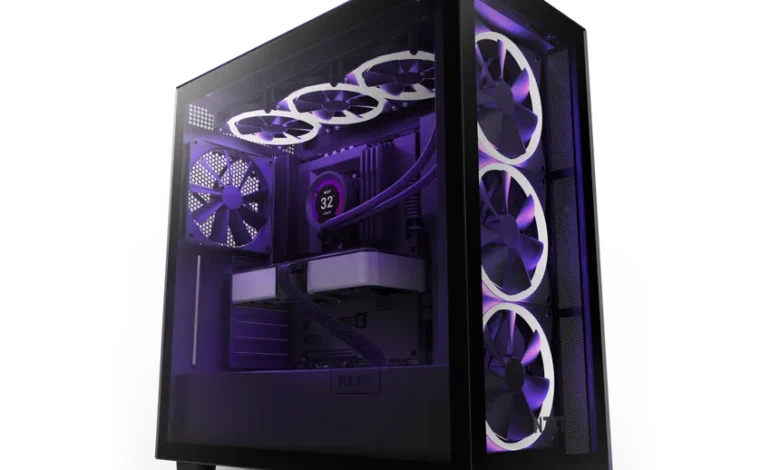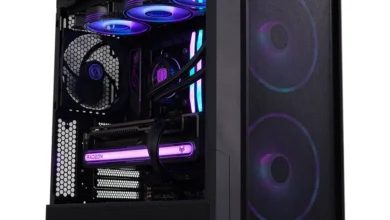Best Value-for-Money Gaming PC Build: Ultimate Guide

Building a gaming PC can be both an exciting and overwhelming task, especially when you aim to get the best bang for your buck. Whether you’re a beginner or a seasoned PC builder, the goal is often the same: to get the best value-for-money gaming PC build without sacrificing performance. In this comprehensive guide, we’ll dive into the ideal components, explain why they’re the best choice, provide a step-by-step guide, and even answer some common FAQs.
Why Focus on the Best Value-for-Money Gaming PC Build?
Gaming PCs can range from budget-friendly setups to ultra-high-end rigs. However, not everyone has the luxury to spend thousands of dollars on top-tier hardware. A best value-for-money gaming PC build ensures that your system is capable of running the latest games smoothly without draining your wallet.
Key Components for a Best Value-for-Money Gaming PC Build
Here’s a breakdown of the components you’ll need and recommended options for each:
| Component | Recommendation | Approximate Price | Why Choose This? |
|---|---|---|---|
| Processor (CPU) | AMD Ryzen 5 5600 or Intel Core i5-12400 | $150–$200 | Both offer excellent multi-core performance for gaming. |
| Graphics Card (GPU) | NVIDIA GeForce RTX 3060 or AMD Radeon RX 6700 XT | $300–$400 | These GPUs balance price and power for 1080p/1440p gaming. |
| Motherboard | B550 (AMD) or B660 (Intel) chipset-based boards | $100–$150 | Compatible with modern CPUs and provide upgrade paths. |
| Memory (RAM) | 16GB DDR4 (3200-3600 MHz) | $50–$70 | 16GB is the sweet spot for gaming and multitasking. |
| Storage | 1TB NVMe SSD (e.g., Samsung 970 EVO or WD Blue SN570) | $50–$80 | Fast storage for quick load times and ample space. |
| Power Supply (PSU) | 550–650W 80+ Bronze or Gold certified (e.g., Corsair CX650M) | $50–$80 | Reliable and efficient power delivery for your system. |
| Case | Mid-tower ATX case with good airflow (e.g., NZXT H510) | $50–$100 | Keeps your components cool and provides ample space. |
| Cooling | Stock cooler (for Ryzen CPUs) or budget air cooler | $0–$30 | Cost-effective cooling for non-overclocked systems. |
Detailed Breakdown of Components
1. Processor (CPU)
For a best value-for-money gaming PC build, CPUs like the AMD Ryzen 5 5600 or Intel Core i5-12400 are ideal. They offer excellent single-threaded and multi-threaded performance, which is critical for gaming and streaming. Pairing these CPUs with a mid-range GPU ensures a balanced system.
2. Graphics Card (GPU)
The GPU is arguably the most critical part of a gaming PC. The NVIDIA RTX 3060 and AMD RX 6700 XT stand out as budget-friendly options for 1080p and 1440p gaming. They also support features like ray tracing and DLSS/FSR, making them future-proof for upcoming titles.
3. Motherboard
Your motherboard should support your CPU and offer necessary features like PCIe 4.0, sufficient ports, and upgrade paths. B550 (AMD) and B660 (Intel) chipsets provide all of this at a reasonable price.
4. Memory (RAM)
For most modern games, 16GB of DDR4 RAM with speeds between 3200-3600 MHz is sufficient. Higher speeds can provide a slight performance boost in CPU-intensive games.
5. Storage
NVMe SSDs have become the standard for gaming PCs due to their speed and affordability. A 1TB SSD ensures you have enough space for games, applications, and media.
6. Power Supply (PSU)
A good-quality PSU ensures the stability and longevity of your system. Opt for a unit with 80+ Bronze or Gold certification to get the best efficiency and reliability.

7. Case
A good PC case doesn’t just house your components; it ensures proper airflow and aesthetics. Look for options that include cable management features and support for future upgrades.
Building the Best Value-for-Money Gaming PC Build
Here’s a step-by-step guide to assembling your gaming PC:
- Prepare Your Workspace: Clear a flat, non-static surface and gather tools like a screwdriver.
- Install the CPU: Place the CPU into the motherboard socket and secure it.
- Install RAM: Insert RAM sticks into the appropriate DIMM slots, usually the second and fourth slots from the CPU.
- Install the SSD: Mount the NVMe SSD in the designated M.2 slot.
- Attach the Motherboard to the Case: Use the standoffs and screws provided.
- Install the GPU: Secure the graphics card into the PCIe slot and connect any required power cables.
- Connect the PSU: Route the cables and connect power to the motherboard, GPU, and storage.
- Power On and Test: Double-check all connections and power on your PC to test functionality.
FAQs on the Best Value-for-Money Gaming PC Build
1. Can I use older components to save money?
Yes, pairing a last-generation CPU or GPU with modern components can save costs without sacrificing much performance.
2. How long will this build last?
A well-balanced best value-for-money gaming PC build can easily last 3–5 years with minor upgrades.
3. Is 16GB of RAM enough for gaming?
Yes, 16GB is more than sufficient for most modern games and multitasking. However, you can upgrade to 32GB if needed in the future.
4. Can this build handle streaming?
Absolutely. With a powerful CPU like the Ryzen 5 5600 or Intel i5-12400, this build is capable of streaming at 1080p without any issues.
5. What if my budget is lower?
Consider opting for budget GPUs like the GTX 1660 Super or Radeon RX 6500 XT, and start with a smaller SSD to save costs.
Conclusion
Building the best value-for-money gaming PC build requires careful planning and smart component choices. By selecting cost-effective yet powerful hardware, you can achieve excellent gaming performance without breaking the bank. Whether you’re gaming at 1080p or diving into 1440p, this build will meet your needs while staying future-proof for years to come.
Investing in a well-thought-out gaming PC isn’t just about playing the latest games; it’s about creating a system that offers versatility, upgradability, and the ultimate value for your money. Follow this guide, and you’re well on your way to crafting a system that delivers the best value-for-money gaming PC build experience.





